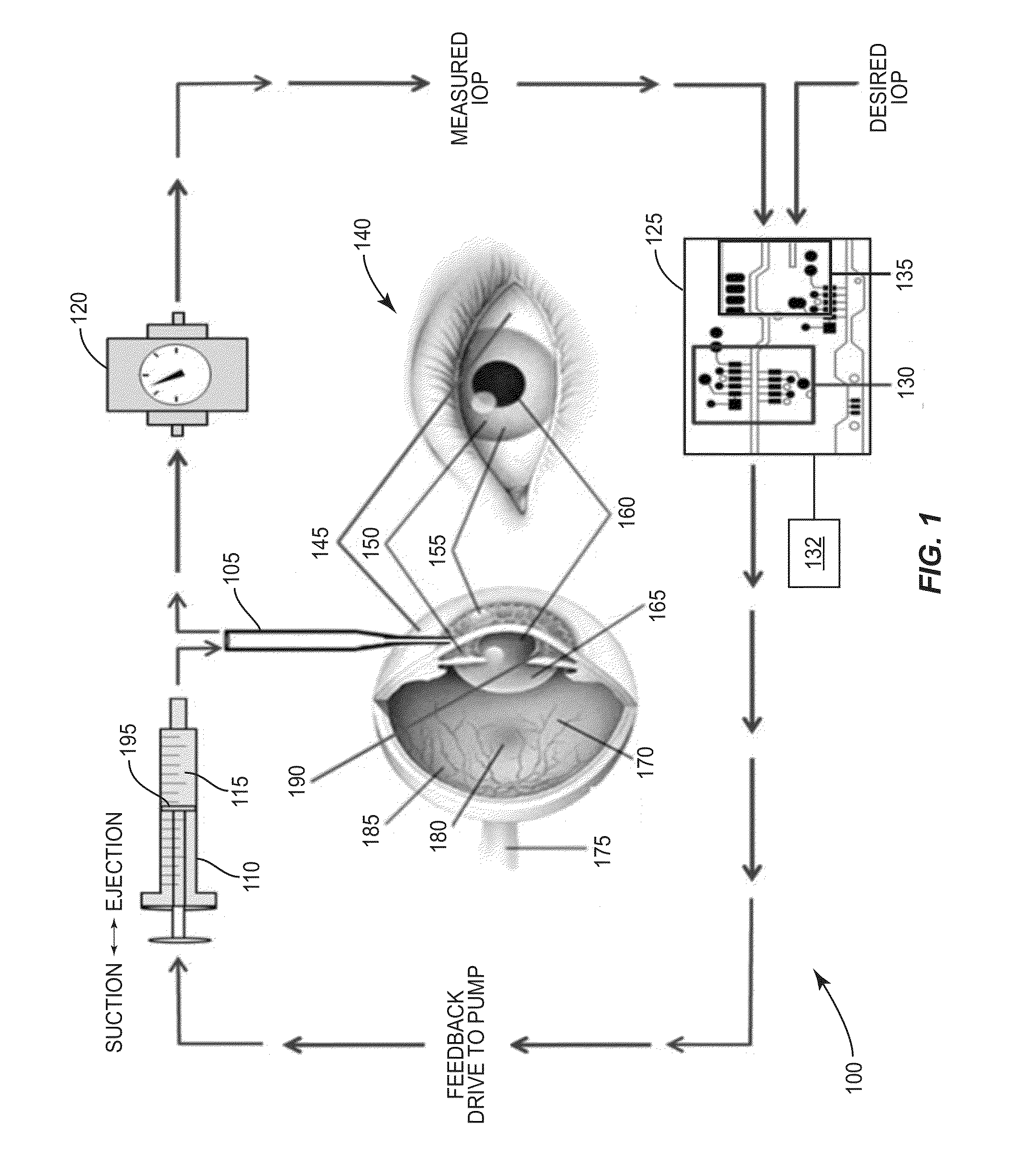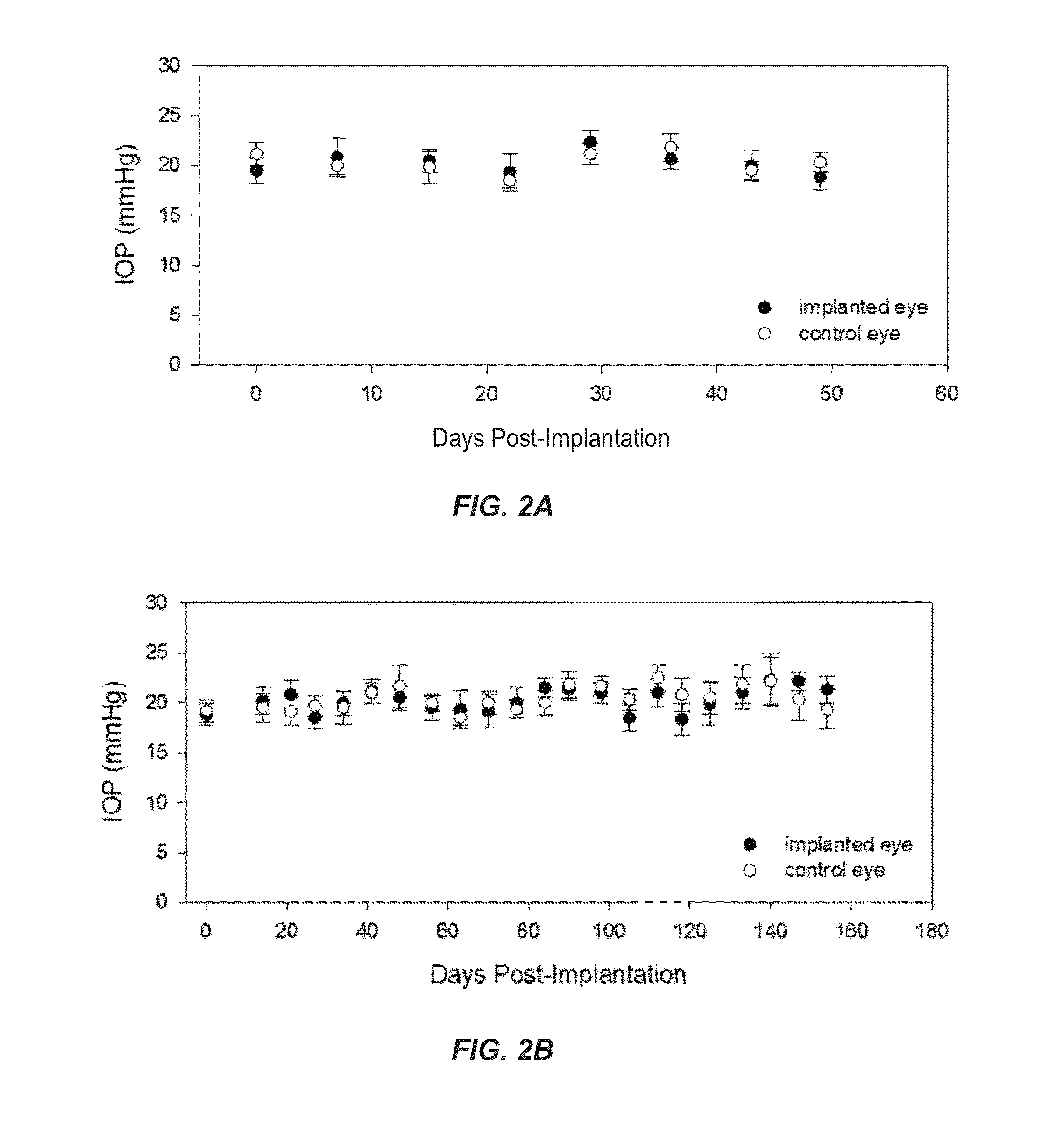Auto-Regulation System for Intraocular Pressure
a technology of intraocular pressure and auto-regulation system, which is applied in the field of pressure-regulated miniature pumps, can solve the problems of slowing down the progression of disease, difficult to obtain clinical understanding, and inconvenient pressure monitoring and physiological testing of small mi
- Summary
- Abstract
- Description
- Claims
- Application Information
AI Technical Summary
Benefits of technology
Problems solved by technology
Method used
Image
Examples
Embodiment Construction
[0030]In the following detailed description of the preferred embodiments, reference is made to the accompanying drawings, which form a part hereof, and within which are shown by way of illustration specific embodiments by which the invention may be practiced. it is to be understood that there may be other embodiments by which the invention may be practiced. It is to be understood that other embodiments may be utilized and structural changes may be made without departing from the scope of the invention.
[0031]The invention disclosed herein is a pressure-regulated miniature pump that automatically controls the IOP of the eye in humans and animals. The invention is intended for use in clinical treatment and / or animal research of glaucoma, an ocular disease associated with chronically elevated IOP levels. The invention also has broad application as an implantable pump within or on any part of a human or animal body for programmable delivery of small volumes of fluid or drugs. The inventi...
PUM
 Login to View More
Login to View More Abstract
Description
Claims
Application Information
 Login to View More
Login to View More - R&D
- Intellectual Property
- Life Sciences
- Materials
- Tech Scout
- Unparalleled Data Quality
- Higher Quality Content
- 60% Fewer Hallucinations
Browse by: Latest US Patents, China's latest patents, Technical Efficacy Thesaurus, Application Domain, Technology Topic, Popular Technical Reports.
© 2025 PatSnap. All rights reserved.Legal|Privacy policy|Modern Slavery Act Transparency Statement|Sitemap|About US| Contact US: help@patsnap.com



